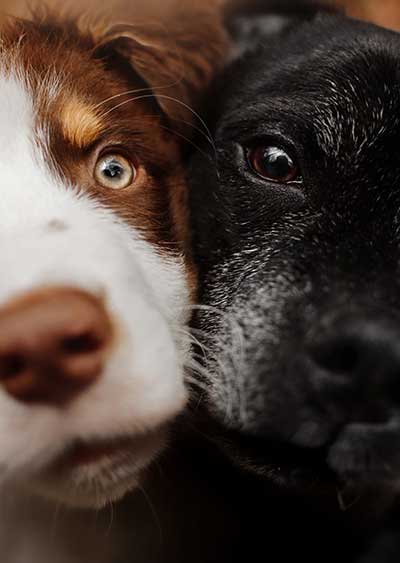 We often get questions about how our furry friends perceive the world around them, especially when it comes to their vision. Today, let’s embark on a journey to uncover the mysteries of canine vision and explore the age-old question: Are dogs truly colour blind?
We often get questions about how our furry friends perceive the world around them, especially when it comes to their vision. Today, let’s embark on a journey to uncover the mysteries of canine vision and explore the age-old question: Are dogs truly colour blind?
Understanding the Basics of Dog Vision: To comprehend how dogs see the world, it’s essential to grasp the fundamentals of their visual system. While dogs share some similarities with humans, there are notable differences that shape their unique perspective.
- Colour Perception: Contrary to popular belief, dogs are not entirely colour blind. While they don’t see the full spectrum of colours as humans do, they are not limited to a black-and-white world either. Dogs primarily perceive the world in shades of blue and yellow, with limited discrimination between red and green.
- Visual Acuity: Dogs excel in low-light vision, thanks to a higher number of rod cells in their retinas. However, their visual acuity is not as sharp as humans. Think of it as viewing the world through a slightly blurry lens compared to our clearer focus.
- Motion Detection: Dogs have a remarkable ability to detect motion, a skill honed from their evolutionary history as hunters. Their eyes are adapted to pick up even subtle movements, making them highly adept at tracking and chasing.
- Peripheral Vision: While humans have a more forward-facing vision, dogs boast a wider field of view. This peripheral vision allows them to take in a broader scene, enhancing their situational awareness.
Debunking the Myth of Total Colour Blindness: The myth of dogs being completely colour blind stems from early research suggesting they see the world in black and white. Recent studies using advanced techniques and a better understanding of canine vision have debunked this myth. Dogs do perceive colour, but their spectrum is different from ours.
Practical Implications for Pet Owners: Understanding how dogs see the world has practical implications for pet owners. Here are a few tips to consider:
- Choosing Toys: Opt for toys in shades of blue and yellow, as these colours are more visible to your furry friend.
- Training Considerations: Use visual cues in training, such as contrasting colours, and be mindful of the lighting conditions.
- Nighttime Adventures: Embrace your dog’s excellent low-light vision during evening walks, but be cautious in extremely dim conditions.
Dogs navigate the world with a unique visual perspective that combines motion detection, enhanced peripheral vision, and a limited but nuanced colour perception. Debunking the myth of total colour blindness allows us to appreciate the richness of their visual experience. So, the next time you gaze into your canine companion’s eyes, know that they see a world full of vibrant hues, just in their own extraordinary way.
